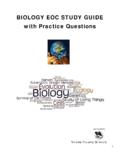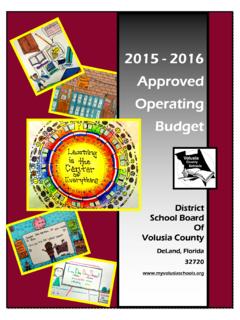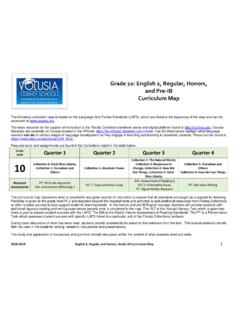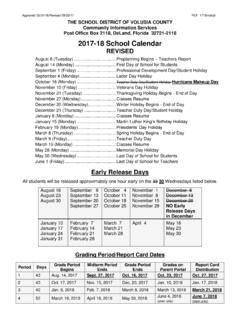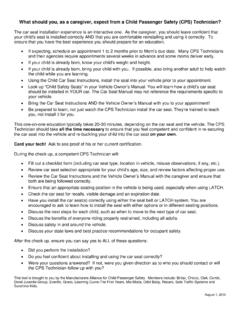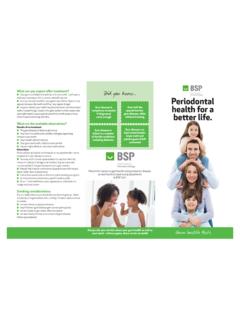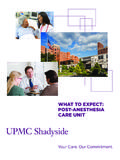Transcription of Grade 11: English 3 Honors Curriculum Map - …
1 Grade 11: English 3 Honors Curriculum Map The following Curriculum map is based on the Language Arts Florida Standards (LAFS), which are listed at the beginning of the map and can be accessed at The main resource for the support of instruction is the Florida Collections textbook series and digital platform found at An overview of the two semesters of instruction is listed in the table below. The Can Do Descriptors highlight what language learners can do at various stages of language development as they engage in teaching and learning in academic contexts. These can be found at . Grade Level Semester 1 Semester 2. Collection 1: Coming to America 11. Collection 3: The Individual and Society Collection 2: Building a Democracy Collection 5: An Age of Realism Collection 4: A New Birth of Freedom Collection 6: The Modern World Collection 6: The Modern World Required VLT: Rhetorical Analysis VLT: Rhetorical Analysis Summative PT: Persuasive Speech or Essay PT: Photo Essay Assessments PT: Socratic Seminar PT: Personal Narrative The Curriculum map represents what is required in each semester's instruction to ensure that all the standards are taught as a support for learning.
2 Flexibility is given to the Grade level PLC and teachers beyond the required texts and activities to add additional resources from Florida Collections or other outside sources to best support students' learning needs The VLT is the Volusia Literacy Test which will be given two times a year to assess student success with the LAFS. The PT is a Performance Task which will assess student success with specific LAFS linked to a particular unit of the Florida Collections textbook. During class discussion of what has been read, students should consistently be asked to find evidence from the text. This textual evidence should then be used in the students' writing, research, discussions and presentations. The study and application of vocabulary and grammar should take place within the context of what students read and write.
3 2018-2019 English 3, Honors , Grade 11 Curriculum Map 1. Grade 11 Language Arts Florida Standards Yearlong Target Standards are bolded. These standards are highly assessed and represent major instructional shifts as required by the Language Arts Florida Standards. Italicized standards are those that require instructional awareness and are woven into the reading and writing process; however, they are not formally assessed. Strand: READING STANDARDS FOR LITERATURE. Cite strong and thorough textual evidence to support analysis of what the text says explicitly as well as inferences drawn from the text, including determining where the text leaves matters uncertain. Determine two or more themes or central ideas of a text and analyze their development over the course of the text, including how they interact and build on one another to produce a complex account; provide an objective summary of the text.
4 Analyze the impact of the author's choices regarding how to develop and relate elements of a story or drama ( , where a story is set, how the action is ordered, how the characters are introduced and developed). Determine the meaning of words and phrases as they are used in the text, including figurative and connotative meanings; analyze the impact of specific word choices on meaning and tone, including words with multiple meanings or language that is particularly fresh, engaging, or beautiful. (Include Shakespeare as well as other authors.). Analyze how an author's choices concerning how to structure specific parts of a text ( , the choice of where to begin or end a story, the choice to provide a comedic or tragic resolution) contribute to its overall structure and meaning as well as its aesthetic impact. Analyze a case in which grasping a point of view requires distinguishing what is directly stated in a text from what is really meant ( , satire, sarcasm, irony, or understatement).
5 Analyze multiple interpretations of a story, drama, or poem ( , recorded or live production of a play or recorded novel or poetry), evaluating how each version interprets the source text. (Include at least one play by Shakespeare and one play by an American dramatist.). Demonstrate knowledge of eighteenth-, nineteenth- and early-twentieth-century foundational works of American literature, including how two or more texts from the same period treat similar themes or topics. By the end of Grade 11, read and comprehend literature, including stories, dramas, and poems, in the grades 11-CCR text complexity band proficiently, with scaffolding as needed at the high end of the range. By the end of Grade 12, read and comprehend literature, including stories, dramas, and poems, at the high end of the grades 11-CCR text complexity band independently and proficiently.
6 Strand: READING STANDARDS FOR INFORMATIONAL TEXT. Cite strong and thorough textual evidence to support analysis of what the text says explicitly as well as inferences drawn from the text, including determining where the text leaves matters uncertain. Determine two or more central ideas of a text and analyze their development over the course of the text, including how they interact and build on one another to provide a complex analysis; provide an objective summary of the text. Analyze a complex set of ideas or sequence of events and explain how specific individuals, ideas, or events interact and develop over the course of the text. Determine the meaning of words and phrases as they are used in a text, including figurative, connotative, and technical meanings; analyze how an author uses and refines the meaning of a key term or terms over the course of a text ( , how Madison defines faction in Federalist No.)
7 10). Analyze and evaluate the effectiveness of the structure an author uses in his or her exposition or argument, including whether the structure makes points clear, convincing, and engaging. Determine an author's point of view or purpose in a text in which the rhetoric is particularly effective, analyzing how style and content contribute to the power, persuasiveness or beauty of the text. 2018-2019 English 3, Honors , Grade 11 Curriculum Map 2. Integrate and evaluate multiple sources of information presented in different media or formats ( , visually, quantitatively) as well as in words in order to address a question or solve a problem. Delineate and evaluate the reasoning in seminal texts, including the application of constitutional principles and use of legal reasoning ( , in Supreme Court majority opinions and dissents) and the premises, purposes, and arguments in works of public advocacy ( , The Federalist, presidential addresses).
8 Analyze seventeenth-, eighteenth-, and nineteenth-century foundational documents of historical and literary significance (including The Declaration of Independence, the Preamble to the Constitution, the Bill of Rights, and Lincoln's Second Inaugural Address) for their themes, purposes, and rhetorical features. By the end of Grade 11, read and comprehend literary nonfiction in the grades 11-CCR text complexity band proficiently, with scaffolding as needed at the high end of the range. By the end of Grade 12, read and comprehend literary nonfiction at the high end of the grades 11-CCR text complexity band independently and proficiently. Strand: WRITING STANDARDS. Write arguments to support claims in an analysis of substantive topics or texts, using valid reasoning and relevant and sufficient evidence. Introduce precise, knowledgeable claim(s), establish the significance of the claim(s), distinguish the claim(s) from alternate or opposing claims, and create an organization that logically sequences claim(s), counterclaims, reasons, and evidence.
9 Develop claim(s) and counterclaims fairly and thoroughly, supplying the most relevant evidence for each while pointing out the strengths and limitations of both in a manner that anticipates the audience's knowledge level, concerns, values, and possible biases. Use words, phrases, and clauses as well as varied syntax to link the major sections of the text, create cohesion, and clarify the relationships between claim(s) and reasons, between reasons and evidence, and between claim(s) and counterclaims. Establish and maintain a formal style and objective tone while attending to the norms and conventions of the discipline in which they are writing. Provide a concluding statement or section that follows from and supports the argument presented. Write informative/explanatory texts to examine and convey complex ideas, concepts, and information clearly and accurately through the effective selection, organization, and analysis of content.
10 Introduce a topic; organize complex ideas, concepts, and information so that each new element builds on that which precedes it to create a unified whole;. include formatting ( , headings), graphics ( , figures, tables), and multimedia when useful to aiding comprehension. Develop the topic thoroughly by selecting the most significant and relevant facts, extended definitions, concrete details, quotations, or other information and examples appropriate to the audience's knowledge of the topic. Use appropriate and varied transitions and syntax to link the major sections of the text, create cohesion, and clarify the relationships among complex ideas and concepts. Use precise language, domain-specific vocabulary, and techniques such as metaphor, simile, and analogy to manage the complexity of the topic. Establish and maintain a formal style and objective tone while attending to the norms and conventions of the discipline in which they are writing.
